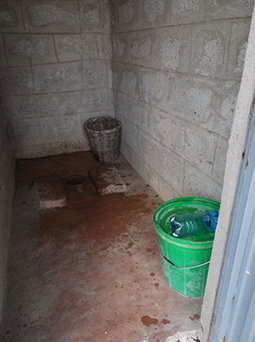12.4 Networks for WASH advocacy
In common with many of the activities involved in trying to change people’s behaviour, advocacy is something that is very difficult to do on your own. Working in partnerships, alliances and coalitions with others will bring much better results. These collaborative organisations are all forms of network. A network is a collaborative body involving many participants from many organisations that (Coulby and Barcelo, n.d.):
- form around an issue or a general set of values
- have an explicit purpose
- communicate and interact towards achieving this purpose
- have a distinct, non-managerial, non-hierarchical form
- are facilitated by a designated person or body (chairperson, coordinator, secretariat, steering group, etc.).
Networks can connect people from a wide range of backgrounds with different expertise and experience. In the urban WASH sector, this may include practitioners as well as researchers serving in government offices, academic and research institutions, NGOs and community-based organisations (CBOs) and other civil groups working on urban WASH related issues. Multi-stakeholder groups that bring together people from different disciplines and sectors will be stronger and more effective because they can share experiences and learn from each other.
Networks can exist at many levels from international and national levels down to localised groups who collaborate over a particular issue of importance to them. Effective urban WASH practitioners should engage in networks to improve sustainable service provision in their locality.
For any advocacy activity, working within a network of collaborators can share the tasks and bring added benefits such as (Coulby and Barcelo, n.d.):
- convening meetings and encouraging dialogue between network members and with other stakeholders
- developing and strengthening common messages and shared values
- building solidarity among network members
- conducting research and gathering data
- facilitating learning, building knowledge and sharing of information
- raising or distributing funding for the network and its members or supervising the spending of funding.
Case Study 12.1, Part 2 Improvements to the dirty latrine
Two years later, Abebe had implemented some successful advocacy work around the town. He persuaded the community to pay a small tariff every time they used the latrine and he secured some finance from a local NGO. He identified some members of the local youth community to provide regular fresh water (Figure 12.3) and soap. With the support of the local town administration officials, he facilitated the implementation of special service payment systems and opened a new employment opportunity to these youths. In collaboration with the NGO staff, he also outlined management and sustainability plans to ensure the improvements would continue into the future.

Explain how involvement of a local network had helped Abebe’s attempts to improve the latrine facilities.
Abebe convened meetings with youth groups, NGOs and the user community. This was built on his knowledge of the local area and of the health risks. He organised community meetings to share information, like the one shown in Figure 12.4, to ensure the community were informed about the health risks of open defecation and the importance of having a clean latrine facility which people would actually use. In this way, he facilitated the developing of shared values by emphasising the importance of reducing the amount of open defecation in the town. Working with the local administration, he raised money from users to pay for soap and arranged for someone to clean the latrine on a regular basis and ensure that there is fresh water in the bucket every day. Working with the NGO he developed plans to ensure the latrine was managed sustainably.

Joining or creating manageable and meaningful networks is important to facilitate advocacy initiatives and take up local governance agendas relating to WASH. However, having too many networks can cause problems rather than solving them. As a WASH practitioner you could consider forming a new network if there is not one already or if you find it difficult to address pressing issues using an existing one. Try to include people and groups that capture the gender, age, disciplinary and sectoral diversity of the urban population in your locality. Before forming a new WASH network you should see if any successful networks already exist and learn from their experience.
12.3 Tools and methods for advocacy
